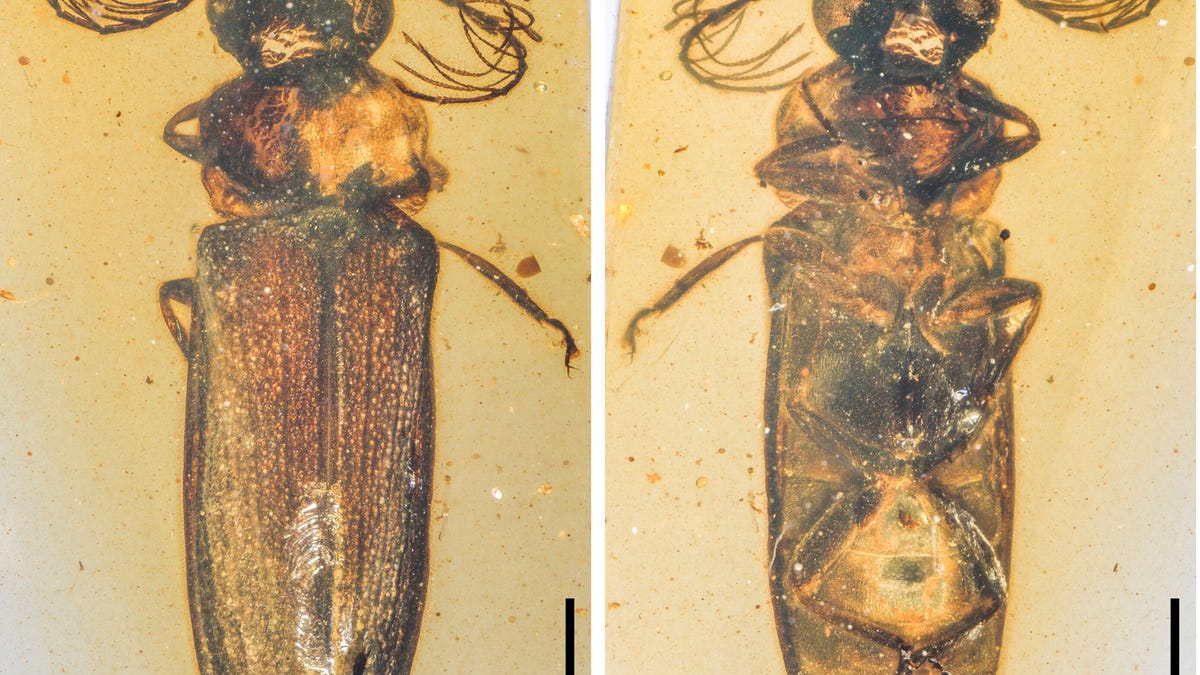100-million-year old beetle fossil sheds light on family of ancient bugs
A well-preserved beetle fossil from the Cretaceous period may be the missing fossil link to today's firefly.

A close-up view of the well-preserved Cretophengodes azari, a fossil light-producing beetle encased in amber.
A beetle trapped in amber for over 100 million years is offering scientists clues to why the bioluminescent insects may have glowed way back during the Cretaceous period, about 145 to 66 million years ago.
In a new study published in the journal Proceedings of the Royal Society B, scientists reveal that a Cretophengodes beetle found "preserved with life-like fidelity in amber" has a direct connection to its firefly cousins.
It's been a bit of a mystery to scientists why ancient beetles could glow. But based on their distant relatives like fireflies, scientists believe the function could likely have been used as a defense against predators, as well as a way to attract mates -- much like the modern-day beetle larvae in the same family have used light.
"The discovery of a new extinct Elateroid beetle family is significant," study co-author Erik Tihelka from the School of Earth Sciences said in a statement, "because it helps shed light on the evolution of these fascinating beetles."
Here's an artistic reconstruction of a Cretophengodes azari male and female in the undergrowth of a Cretaceous rainforest.
Because this particular beetle fossil was well-preserved in amber, scientists were able to see the light organ on the abdomen of the male beetle. That provides proof adult Cretophengodes were able to produce light, some 100 million years ago.
The majority of light-producing beetles belong to the Elateroidea family, which has over 24,000 known species. The discovery of this beetle provides the missing fossil link between living families, and in doing so helps scientists understand how these beetles evolved and how they should be classified.

